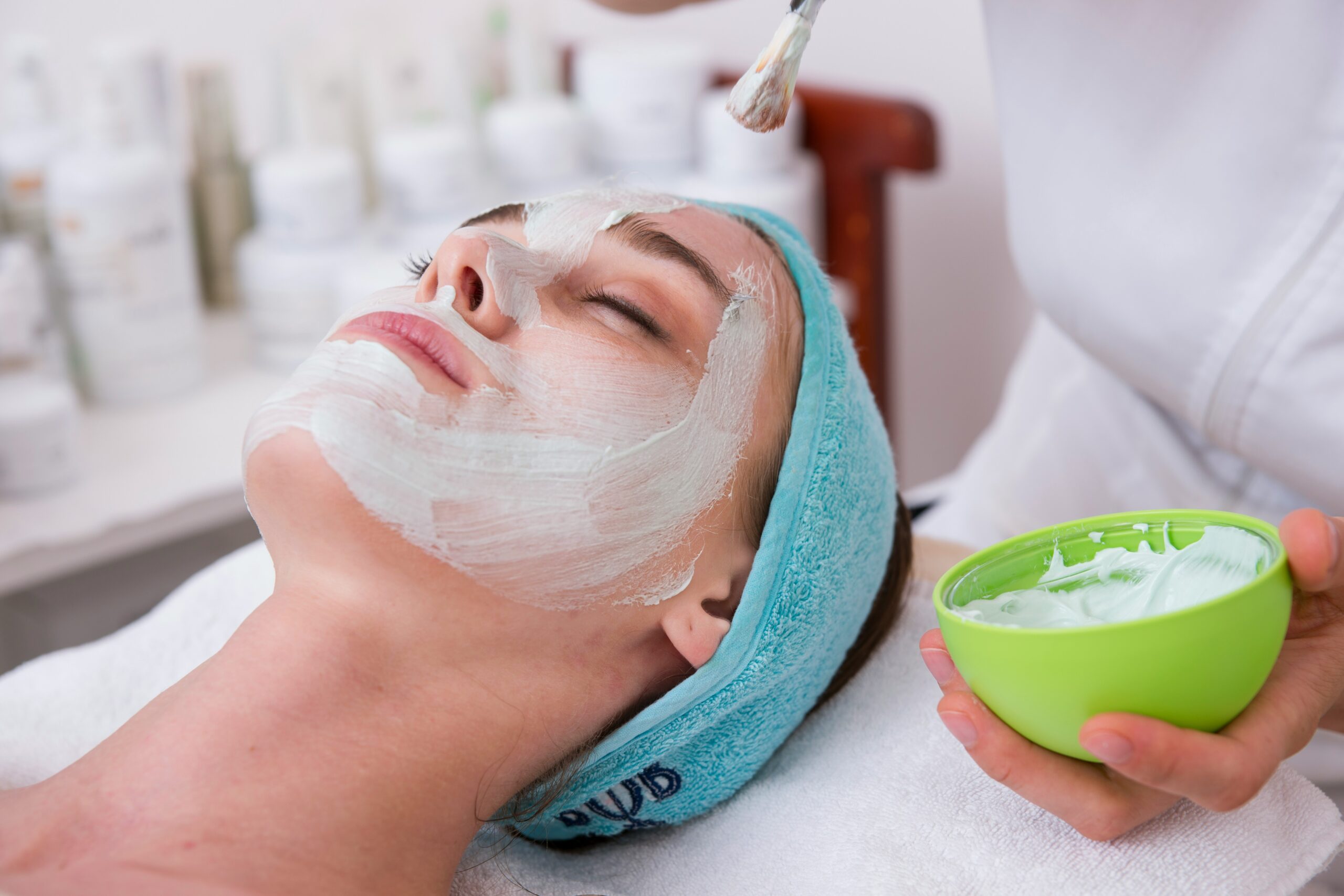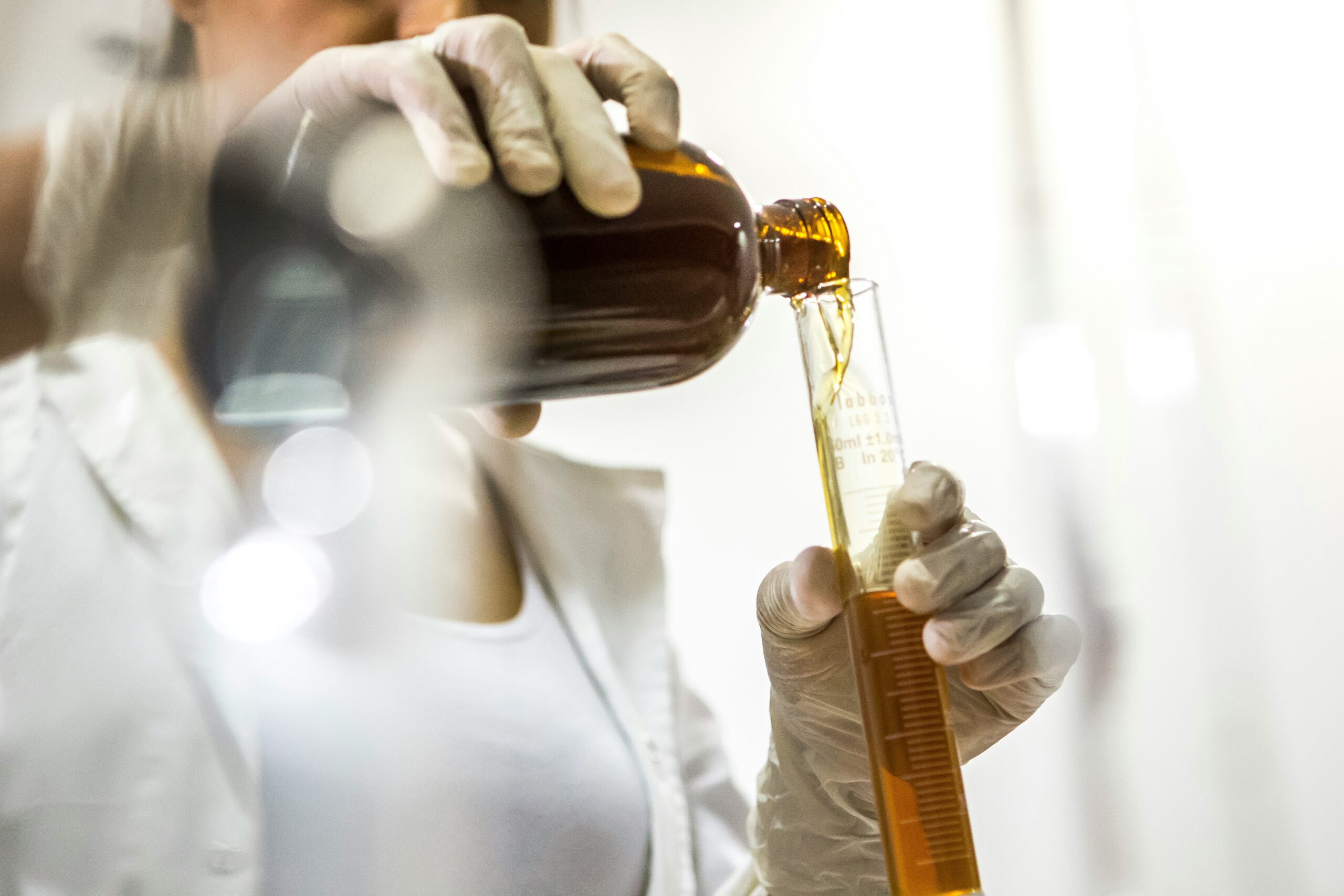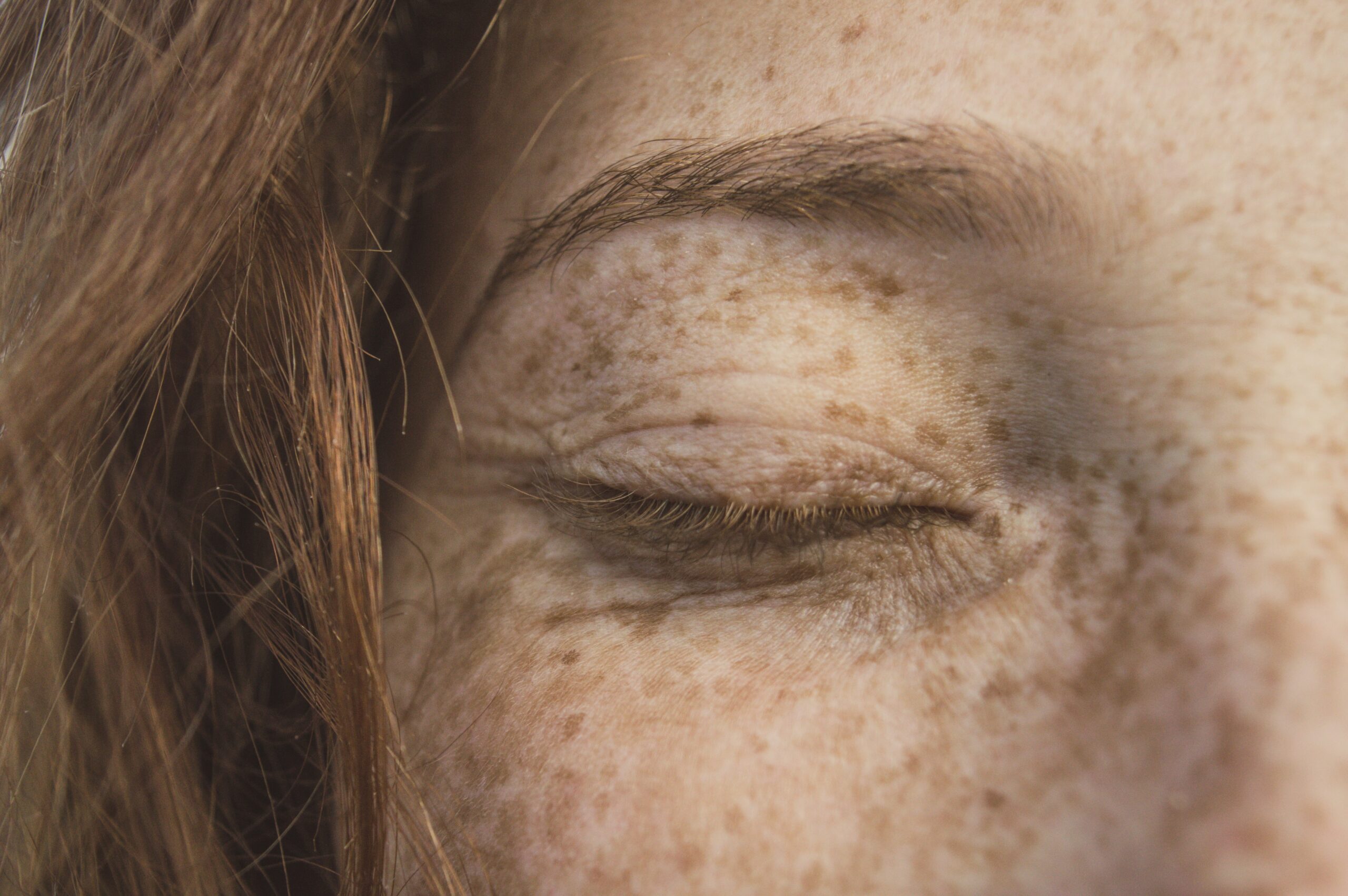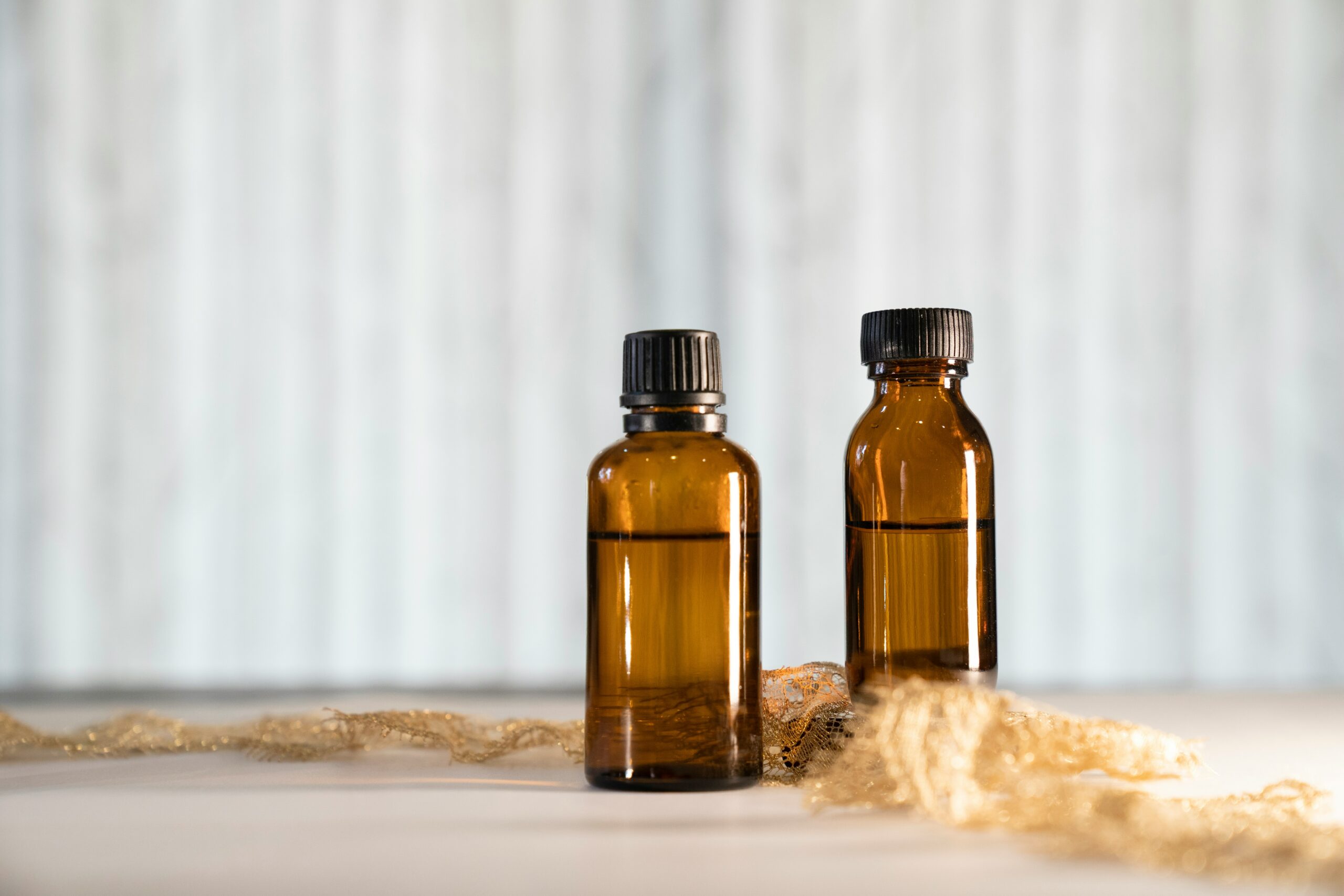A chemical peel is a non-invasive cosmetic and dermatological procedure to exfoliate the epidermis, resulting in an improved appearance. The treatment improves the skin's condition by shallowing fine wrinkles and brightening discoloration. It activates the skin to make new cells.
There are various types of exfoliation treatments. Mechanical peels involve abrading the epidermis with abrasive substances, which rub against the skin to produce the desired effect. Chemical peels, on the other hand, are more gentle, as the exfoliation takes place with the help of chemical compounds and acids contained in the peel.
Various preparations and chemicals are used, selected according to individual needs. They reach the skin's superficial or more profound layers depending on the acid concentration. Chemical peelings produce immediate results by stimulating regenerative processes in the inner layers. Chemical peels are popular treatments in dermatological and cosmetic surgeries. It is used for various skin problems. Although the treatments are less invasive than chemical peels, post-treatment instructions must be followed so that complications in the form of skin irritation do not occur.
However, chemical peeling is unsuitable for all patients; some contraindications exist. Deep chemical peels also carry some risk of side effects, so such treatments should be carried out by qualified personnel who follow safety instructions. Find out more about chemical peeling.

Chemical peeling of the epidermis is a chemoexfoliation![]() treatment that begins with applying a chemical preparation to the skin, and the chosen substance will damage the epidermis in a controlled manner without damaging the dermis. The chemical peel also stimulates the skin to regenerate and remodel, resulting in a fresh appearance and smooth skin texture. Skin ablation aims to remove a small thickness of damaged skin, followed by the body's natural process of wound healing, which results in skin rejuvenation. The gentle treatment does not cause complications such as scarring and unwanted pigmentation changes.
treatment that begins with applying a chemical preparation to the skin, and the chosen substance will damage the epidermis in a controlled manner without damaging the dermis. The chemical peel also stimulates the skin to regenerate and remodel, resulting in a fresh appearance and smooth skin texture. Skin ablation aims to remove a small thickness of damaged skin, followed by the body's natural process of wound healing, which results in skin rejuvenation. The gentle treatment does not cause complications such as scarring and unwanted pigmentation changes.
The processes that occur during peeling are keratocoagulation![]() and denaturation of proteins
and denaturation of proteins![]() in various layers of the skin. The process causes the release of pro-inflammatory cytokines, which means the treatment is accompanied by controlled inflammation. Inflammation is not dangerous but desirable, as inflammation activates healing signals and epidermal stimulation. New collagen and elastin are deposited in the skin, which makes the skin smooth and wrinkle-free after the treatment. Chemical peeling also thickens the epidermis and increases the volume of the dermis.
in various layers of the skin. The process causes the release of pro-inflammatory cytokines, which means the treatment is accompanied by controlled inflammation. Inflammation is not dangerous but desirable, as inflammation activates healing signals and epidermal stimulation. New collagen and elastin are deposited in the skin, which makes the skin smooth and wrinkle-free after the treatment. Chemical peeling also thickens the epidermis and increases the volume of the dermis.
Exfoliation also improves pigmentation, reducing erythema and hyperpigmented lesions. The process is called skin resurfacing and can be applied to various body areas. Peeling is most commonly done on the face, but the skin on the neck, décolleté, or hands can also be resurfaced. When used correctly and adequately, peeling agents are practical and helpful in treating various skin conditions. Superficial chemical peels are still popular worldwide, although deep peeling techniques have been replaced by laser exfoliation in recent years.

Chemical peels are suitable for various skin problems. The treatments are done to treat various conditions, but for healthy people, they can also improve the skin's overall condition. Therefore, the indications for a chemical peel treatment are:
Chemical peels are used to treat various types of skin discoloration and pigmentation changes. Skin hyperpigmentation is changes in the distribution of melanin, which results in spots of different shades. Hyperpigmentation can occur due to hormonal changes, medication side effects, sun exposure, and disease. There are various types of hyperpigmentation, such as post-inflammatory or acne discoloration.
Besides this, melasma is a pigmentation disorder, a kind of hormonal hyperpigmentation in the form of spots. Hyperpigmentation can also be caused by congenital lesions such as lentigines and ephelides. Chemoexfoliation treatment can effectively reduce the appearance of spots of various causes, reducing hyperpigmentation by exfoliating the epidermis and stimulating renewal.

Chemical peels can help treat and alleviate inflammatory lesions such as acne and its types, such as rosacea![]() . Acne can have various causes. It presents with recurrent facial erythema with papules, pustules, and inflammatory lesions, which can be alleviated with peels and other cosmetic treatments. Peels can also be used on the enlarged pores that often occur with acne. A different indication for chemoablation is folliculitis, a dermatological condition caused by microorganisms. Chemical peels are indicated in such cases because they prevent the follicle orifices from becoming blocked and sebum from accumulating in the follicles.
. Acne can have various causes. It presents with recurrent facial erythema with papules, pustules, and inflammatory lesions, which can be alleviated with peels and other cosmetic treatments. Peels can also be used on the enlarged pores that often occur with acne. A different indication for chemoablation is folliculitis, a dermatological condition caused by microorganisms. Chemical peels are indicated in such cases because they prevent the follicle orifices from becoming blocked and sebum from accumulating in the follicles.
Various types of scarring can be reduced with a chemical peel. After acne has healed, scars are often left behind, and it is because the fibrous connective tissue does not fill the entire tissue defect during the healing of acne lesions. The bottom of the scar lies below the surface of the skin and has formed edges. Scars can also form on the skin due to trauma or surgery. Regular chemoexfoliation can remove scars and regenerate the epidermis. Peels are also suitable for skin keratosis.
Human skin changes as it ages. The skin's aging process is genetically determined, known as chronoaging, but it is also compounded by environmental influences that can further accelerate the aging process—chronoaging results in superficial and medium-depth wounds, which can also be treated with chemoablation. Chemical peels are characterized by the fact that they effectively reduce wrinkles and rejuvenate the skin. Even stretch marks and deep wrinkles can be reduced by peel treatments.

Solar keratosis![]() is a skin lesion that is considered a precancerous skin condition. This chronic and progressive condition occurs due to overexposure to the sun and UV radiation. As a result, it results in changes at the epidermal level. In most cases, solar keratosis is a benign lesion that favors the development of skin cancer. If treatment is implemented early enough, most lesions can be eliminated, including by chemoablation.
is a skin lesion that is considered a precancerous skin condition. This chronic and progressive condition occurs due to overexposure to the sun and UV radiation. As a result, it results in changes at the epidermal level. In most cases, solar keratosis is a benign lesion that favors the development of skin cancer. If treatment is implemented early enough, most lesions can be eliminated, including by chemoablation.
Chemical peels activate several vital processes, such as keratolysis, coagulation, and protein denaturation. Various substances are used in chemical peels, which require proper preparation for the patient's needs and skin condition. Peelings are differentiated into three types in terms of the intensity of the treatment. A chemical peel can be a light peel![]() that only covers the superficial layer of the skin. Such peelings are mild because low concentrations of substances are used. Medium peels
that only covers the superficial layer of the skin. Such peelings are mild because low concentrations of substances are used. Medium peels![]() allow controlled exfoliation of the papillary dermis.
allow controlled exfoliation of the papillary dermis.
On the other hand, deep peels![]() are based on the complete destruction of the epidermis down to the reticular layer of the dermis. A chemical peel can be performed with various depths of acid penetration. It depends on which lesions the treatment manages to remove and to what level. Milder peels that act on the papillary or upper to middle layer of the dermis help to reduce superficial lesions associated with elastin and collagen deposition. Peelings that reach the basal layer, i.e., the deepest part of the skin, contain melanocytes. It enables them to deal effectively with uneven pigmentation.
are based on the complete destruction of the epidermis down to the reticular layer of the dermis. A chemical peel can be performed with various depths of acid penetration. It depends on which lesions the treatment manages to remove and to what level. Milder peels that act on the papillary or upper to middle layer of the dermis help to reduce superficial lesions associated with elastin and collagen deposition. Peelings that reach the basal layer, i.e., the deepest part of the skin, contain melanocytes. It enables them to deal effectively with uneven pigmentation.

Selecting the right chemical for the skin problem is also essential. Exfoliating agents vary, with pKa and pH levels being critical indicators. The lower the pKa, the stronger the peeling action. Chemical peels also use acids with low pH levels. Peeling agents can be divided into the following two categories:
Keratolytics dissolve or exfoliate cells by breaking the bonds between keratinocytes. Keratolytic agents include substances such as glycolic acid![]() and salicylic acid
and salicylic acid![]() , which are common acids used in chemical peels. Keratolytic preparations are combinations of several acids at various concentrations. Lactic acid is also often combined and is a component of Jessner's solution
, which are common acids used in chemical peels. Keratolytic preparations are combinations of several acids at various concentrations. Lactic acid is also often combined and is a component of Jessner's solution![]() . Jessner's peel is very versatile and one of the most effective acid combinations. The solution is mainly used in the treatment of hyperkeratotic lesions and acne.
. Jessner's peel is very versatile and one of the most effective acid combinations. The solution is mainly used in the treatment of hyperkeratotic lesions and acne.
Protein denaturants include trichloroacetic acid (TCA)![]() , a popular exfoliant effective on sun discoloration, photodamage, scars, and congenital skin lesions. In addition to this, phenol
, a popular exfoliant effective on sun discoloration, photodamage, scars, and congenital skin lesions. In addition to this, phenol![]() and croton oil
and croton oil![]() are often used in deep skin penetration peels. Phenol is also used for lip augmentation and is widely used in various cosmetic procedures.
are often used in deep skin penetration peels. Phenol is also used for lip augmentation and is widely used in various cosmetic procedures.
Light peels with mild action are generally safe for most patients. Side effects and complications risk are mainly associated with medium and deep peels. However, there are contraindications to chemical peels. People with certain conditions and diseases should not do these treatments, as they can cause harm.

You should consult a specialist before having a chemical peel treatment. In some cases, the use of exfoliation can be harmful to your health. Contraindications for various types of chemical peels include:
An allergy to any of the ingredients in the peeling solution precludes treatment regardless of the concentration of the substance. The acids used in peels have no toxicity and rarely cause allergies. However, the chemical compounds can cause allergic reactions in some people. In addition, chemical peeling can irritate the skin, which is associated with a higher risk of skin allergies.
Hard lacerations or wounds in the peeling area rule out the procedure. Chemical peel ingredients can irritate the skin and make the condition worse. Active skin inflammation, herpes, and severely irritated skin are also contraindicated.
An ongoing body infection not involving the skin also precludes peeling treatments. It includes viral and bacterial infections and autoimmune diseases such as diabetes![]() . The conditions can put this type of treatment at risk.
. The conditions can put this type of treatment at risk.
Certain skin types are more prone to irritation and damage, so chemical peels are not advisable for them. Patients with Fitzpatrick skin types III to VI![]() should avoid chemical peels. These skin phototypes are largely resistant to sunlight, but chemical peeling treatments pose a high risk for skin hyperpigmentation in patients with the types mentioned.
should avoid chemical peels. These skin phototypes are largely resistant to sunlight, but chemical peeling treatments pose a high risk for skin hyperpigmentation in patients with the types mentioned.

Kidney and liver diseases also mean that sick patients should avoid chemical treatments. This applies to phenol-based peels, which can cause some complications. Phenol peeling has a strong effect, so risks mark it, and the recovery period is long-term.
Although chemical peels can be helpful for various skin conditions, some diseases preclude the treatment. Conditions that contraindicate chemoablation include psoriasis![]() and atopic dermatitis
and atopic dermatitis![]() .
.
Actively ongoing isotretinoin treatment is a contraindication for peeling. It mainly applies to medium and deep peels. The drug is used to treat various types of acne. People with acne can do peels after they have finished treatment with this type of drug.
Previously performed radiotherapy excludes deep and medium peels with chemical substances. After radiotherapy, the skin may require different types of care. Unique cosmetics that do not irritate the epidermis and prevent water loss are recommended for skin care after radiotherapy.
During pregnancy and lactation, we suggest choosing cosmetics carefully. Deep and medium peelings with chemical substances may pose a risk to pregnant women. During pregnancy, the patient's skin is more sensitive. Certain acids should be avoided as they can contribute to the formation of refractory skin discoloration.

Deep peels show better therapeutic effects but are also associated with a higher possibility of complications. People with darker skin phototypes who have hypertrophic scars are primarily at risk of complications. The outcome of a chemical peel can also be affected by medication. Complications after peels usually occur due to insufficient care during and after the procedure. It is, therefore, essential to follow the post-treatment instructions set by the specialist. Particular emphasis is placed on avoiding sunlight![]() and sunbathing after the procedure. Side effects of chemical peels can occur immediately after treatment or with some delay. Complications include, but are not limited to:
and sunbathing after the procedure. Side effects of chemical peels can occur immediately after treatment or with some delay. Complications include, but are not limited to:
Immediately after exfoliation, symptoms such as redness and swelling of the skin within the area where the peel was performed may occur. Patients may experience burning and itching, in some cases blistering. In addition, acne may occur or worsen. Milia eruptions are also observed.
After peeling with chemical substances, the skin is more exposed to the sun. Discoloration may occur as a side effect of the treatment due to radiation or different factors. Hypopigmentation and boundary lines have been observed in patients sometime after treatment.
Occasionally, cardiac arrhythmias may occur immediately after the peeling procedure. Systemic toxicity is also possible. Patients are also more prone to bacterial, viral, or fungal infections after the procedure. On the other hand, salicylism, although rare, is a dangerous complication.